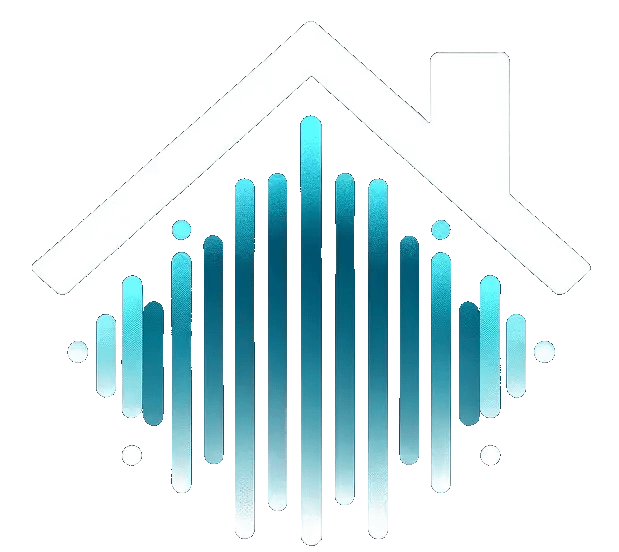Do you want more customization in the ambiance of your home? This is our guide to help you transform your living environment for any occasion.
Smart lighting refers to lighting systems that can be controlled remotely using a smartphone, tablet, or voice assistant. In the modern home, these systems are increasingly essential for convenience, energy efficiency, enhanced ambiance, and automation.
Benefits of Smart Lighting Solutions
- Energy Efficiency: Smart lighting systems often use energy-efficient LED bulbs and allow for automated scheduling at certain times of the day. This helps reduce energy consumption and costs.
- Convenience and Automation: Control your lights remotely or set schedules to automatically turn them on and off.
- Enhanced Home Security: Use smart lights to simulate occupancy when you’re away, deterring potential intruders.
- Mood and Ambiance Control: Easily adjust the lighting to suit your mood or activity, from cozy dim lighting for movie nights to bright lights for working or reading.
Types of Smart Lighting Solutions
Smart Bulbs
- LED Smart Bulbs: Long-lasting and energy-efficient, these bulbs can be controlled remotely.
- RGB Smart Bulbs: Change the color of your lighting to any hue in the spectrum for various moods and occasions.
- Dimmable Smart Bulbs: Adjust the brightness of your lights without needing a separate dimmer switch.
- Voice-controlled Smart Bulbs: Use voice commands to control your lights through Alexa, Google Assistant, or other assistants.
Smart Light Switches and Dimmers
- Benefits of Smart Switches: Control your existing lights without replacing bulbs.
- Compatibility with Existing Wiring: Ensure the smart switches are compatible with your home’s wiring.
- Popular Brands and Models: Options include Lutron Caseta, TP-Link Kasa, and Leviton Decora.
Smart Light Strips
- Ideal Applications for Light Strips: Perfect for accent lighting under cabinets, behind TVs, or along stairs.
- Installation Tips: Most strips are adhesive and can be cut to size.
- Customization Options: Change colors and patterns to suit your decor.
Smart Lamps and Fixtures
- Desk Lamps, Floor Lamps, and Ceiling Fixtures: Various smart options for all lighting needs.
- Important Features: Adjustable brightness, color options, and integration capabilities.
- Integration with Smart Home Systems: Ensure compatibility with your existing smart home ecosystem.
Outdoor Smart Lighting Solutions
- Porch, Garden, and Pathway Lights: Enhance your outdoor space with smart lighting.
- Integration with Home Security Systems: Link outdoor lights to your security system for added protection.
Smart Lighting Ecosystems and Brands
- Philips Hue Ecosystem: Comprehensive and highly regarded, offering a wide product range.
- LIFX Smart Lighting: Known for vibrant colors and no need for a hub.
- TP-Link Kasa Series: Affordable and reliable options.
- Other Popular Ecosystems: Consider options like Sengled and Wyze.
6 Steps to Implement Smart Lighting in Your Home
Step 1: Planning Your Smart Lighting Setup
- Assessing Current Lighting: Take stock of your existing lighting and decide where smart lighting will be most beneficial.
- Identifying Key Areas for Smart Lighting: Focus on high-traffic areas, outdoor spaces, and rooms where lighting ambiance is crucial.
Step 2: Installation Guide for Smart Bulbs and Switches
- Choose Smart Bulbs and Switches: Identify which devices fit your needs and budget.
- Step-by-Step Installation for Smart Bulbs: Typically involves screwing in the bulb and connecting it to your home Wi-Fi via an app.
- Installing Smart Switches and Dimmers: Follow manufacturer instructions for wiring and setup.
Step 3: Integrating Smart Lighting with Smart Home Systems
- Integration with Smart Speakers: Connect your lights to devices like Amazon Echo or Google Home for voice control.
- Compatible Home Automation Systems: Ensure your lights work with systems like Zigbee, Z-Wave, or IFTTT for advanced automation.
Step 4: Scheduling and Automation
- Setting Timers and Schedules: Automate your lights to turn on/off at specific times, enhancing convenience and security.
Step 5: Scene Setting and Mood Lighting
- Creating Custom Lighting Scenes: Customize lighting scenes for different activities, such as reading, dining, or relaxing.
Step 6: Voice Control and Remote Access
- Using Voice Assistants: Control your lights hands-free with voice commands.
- Managing Lighting via Smartphone Apps: Use apps to adjust lighting from anywhere.
Conclusion
Smart lighting solutions offer numerous benefits, from enhanced energy efficiency and convenience to improved security and ambiance control. Planning your setup carefully and choosing the right products can create a smart lighting system that meets your needs and transforms your home. Start exploring the possibilities of smart lighting today and enjoy a brighter, smarter home.
FAQs on Smart Lighting Solutions
What is smart lighting and how does it work?
Smart lighting uses internet-connected bulbs and switches to allow remote control and automation.
Can I control smart lights when I'm not at home?
Yes, through smartphone apps or voice assistants.
Are smart lights energy-efficient?
Most smart lights use LED technology, which is highly energy-efficient. See Lighting Choices to Save You Money by the Department of Energy for more information on the efficiency of LED lighting technology.
How do I know if my existing bulbs are compatible with smart switches?
Check the manufacturer’s specifications to ensure compatibility with your existing setup.



